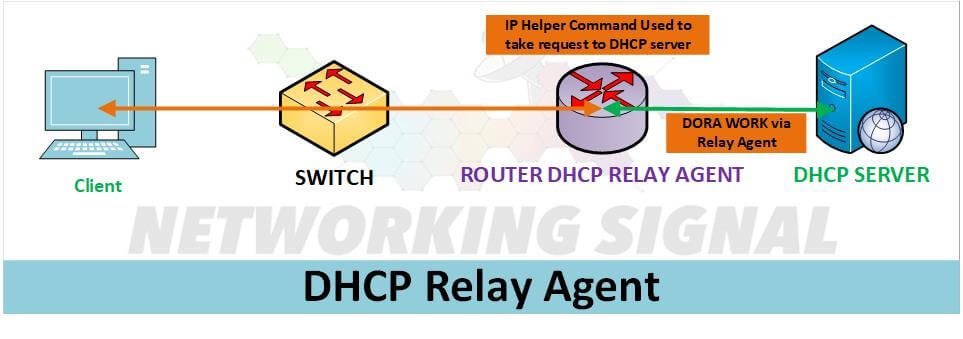What is DHCP Relay Agent?
DHCP Relay Agent is a software program that relays DHCP messages between DHCP clients and servers. It is typically used in networks where there are multiple DHCP servers, or where DHCP clients are not on the same network as the DHCP server.
The DHCP Relay Agent software program must be installed on a computer that is connected to both the DHCP client and server networks.
When a DHCP client sends a request to the DHCP server, the DHCP Relay Agent software program intercepts the request and forwards it to the DHCP server. The DHCP server then sends a response back to the DHCP Relay Agent, which in turn delivers the response to the DHCP client.
Look Here:
Uses of DHCP Relay Agent
DHCP Relay Agent can be used in a variety of network scenarios, such as the following:
- Large enterprise networks with multiple DHCP servers
- Networks where DHCP clients are not on the same network as the DHCP server
- Networks where there is a firewall between the DHCP client and server networks
Advantages of DHCP Relay Agent
DHCP Relay Agent has a number of advantages, including the following:
- It eliminates the need for DHCP clients to be on the same network as the DHCP server.
- It allows for centralized management of DHCP server settings.
- It can be used to troubleshoot DHCP problems.
Disadvantages of DHCP Relay Agent
There are a few disadvantages to using DHCP Relay Agent, including the following:
- It adds an extra layer of complexity to the network.
- It can be used by malicious individuals to spoof DHCP messages and gain unauthorized access to networks.
- It can cause problems if not configured correctly.
How Does DHCP Agent Relay Work?

Here are the Steps for How DHCP agent Relay Works:
- The client sends a DHCPDISCOVER message.
- The DHCP server sends a DHCPOFFER message.
- The client sends a DHCPREQUEST message.
- The DHCP server sends a DHCPDECLINE message.
- The client sends a DHCPRELEASE message.
- The server sends a DHCPACK message.
- The client configures its network settings.
- The server sends a DHCPNAK message.
On what interface is the DHCP relay agent configured?
The DHCP relay agent is configured on the interface connected to the DHCP client network. The agent will intercept DHCP messages that are sent from DHCP clients on this network and forward them to the DHCP server. When the DHCP server sends a response, the agent will then forward it back to the client.
Can you configure multiple DHCP relay agents on a single computer?
Yes, you can configure multiple DHCP relay agents on a single computer. This can be useful in scenarios where there are multiple DHCP server networks, or where DHCP clients are not on the same network as the DHCP server.
What is boot Thresal on a DHCP relay agent?
Boot Thresal is the number of DHCP messages that a DHCP relay agent will forward before it times out and restarts. This setting can be useful in preventing denial-of-service attacks, where an attacker sends a large number of DHCP requests in an attempt to overload the system.
What is the use of option 82 on the DHCP relay agent?
Option 82 is used to provide additional information about DHCP clients. This information can be used by DHCP servers to make decisions about how to configure the network. For example, Option 82 can be used to specify the location of a DHCP client, which can be useful in networks with multiple DHCP servers.
How do I know if my DHCP relay agent is working?
You can use the “netstat -s” command to check the status of the DHCP relay agent. This command will show you the number of DHCP messages that have been intercepted and forwarded by the agent.
What are some common problems with DHCP relay agents?
One common problem with DHCP relay agents is that they can be used by attackers to spoof DHCP messages and gain unauthorized access to networks. Another problem is that the agent can cause problems if it is not configured correctly.
How can I prevent problems with DHCP relay agents?
One way to prevent problems with DHCP relay agents is to use security features such as DHCP snooping and DHCP filtering. These features can help to prevent unauthorized access to networks and ensure that the agent forwards only legitimate DHCP messages.

